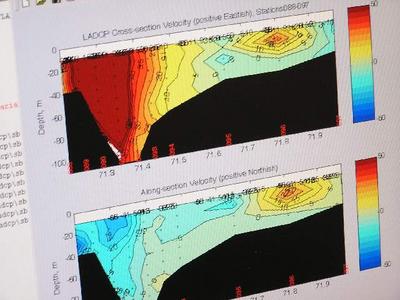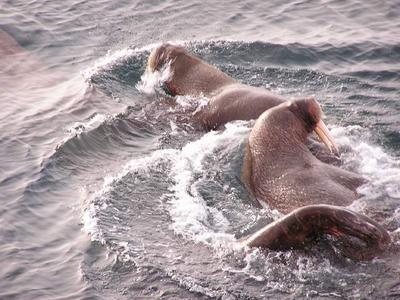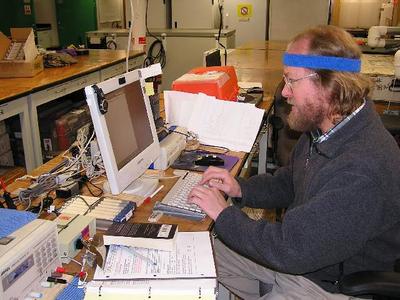30 July, 2003
Chief Scientist's Report #4
R/V Nathaniel B. Palmer SBI Survey Cruise
James H. Swift
30 July 2003, ca. 1:00 pm Alaska time - from R/V Nathaniel B. Palmer
on the outer Chukchi Shelf
We have now completed 144 stations from R/V Nathaniel B. Palmer
during our CTD/hydrographic survey of the US Western Arctic
Shelf-Basin Interactions Phase II Field Program study area, including
during the past week the final sections of our four cross-section
exploration of Barrow Canyon waters, a short section across the
Chukchi Shelf near Barrow Canyon, and two high-resolution
shelf-slope-basin sections which reached well into the Canada Basin
interior, each crossing the slope in the zone between Barrow Canyon
and Herald Valley (i.e., west of Barrow Canyon).
The shelf-slope-basin sections were carried out with many of the
stations at 3-mile spacing. Because the water column deepens rapidly
off the slope - in deep water we use the full sampling capacity of
our 24-place rosette at most stations - and because there is a limit
on the number of water samples we can analyze each day, these
sections represent considerable effort by the onboard science team.
That effort has every appearance of having produced a bounty of
information for the SBI program. For example, our first long section
west of Barrow Canyon uncovered three closely-spaced eddies,
including a pair of cold-core halocline eddies, very nicely detailed
in the CTD, lowered Acoustic Doppler Current Profiler (thanks to Dr.
Eric Johnson, our onboard LADCP expert), dissolved oxygen, and
nutrient data. And the return section, closer to Herald Valley,
hinted that the boundary over the upper slope was indeed feeding
shelf water into the basin.
Weather during the past week has been gray, cold and often foggy,
with rain and snow. Winds have been in the 20-25+ knot range much of
the time, although in the ice they have little immediate effect on
the ship other than increasing its on-station drift. The sea ice
cover has varied from very open, with many broad leads, to fairly
heavy and close, but only first year ice has been observed, all of it
fairly rotten, and Captain Joe and his officers have never found the
way impassable.
Weather unfavorable for flying resulted in only one marine mammal
survey flight being flown during the past week. Nevertheless, that
survey represented a good sample of seals hauled out over basin
waters, which added to the growing coverage of the SBI study area the
marine mammal team is acquiring. They are hoping that more favorable
flying conditions during the coming week will enable them to proceed
with their aerial surveys now that we are once again over the shelf.
The central unit of our CTD system celebrated 'hump day' - the
halfway mark in the cruise - by self-destructing (an electrical
short). But we were ready with a well-calibrated spare. We took the
opportunity provided by that repair to re-do the electrical and
mechanical terminations to the CTD/rosette package and replace two
underwater cables. And our nutrient analyst took advantage of the
short gap in the work to replace the pump tubing on the autoanalyzer.
So all ready to go and with plenty of stations on the plan, we are
now embarked on the first of three long sections which will together
comprise the bulk of our survey of the Chukchi shelf. Here stations
are typically 50 meters deep and 10 miles apart, and so if all goes
well progress can be rapid.
We have now completed two 'cup casts' - exploiting the
compressibility of Styrofoam cups under 360 atmospheres pressure -
with many on board providing decorated cups; during the past week we
saw polar bears almost daily; snd the galley staff continues to pour
on the tasty calories.
The survey goes on and all is well.

Lowered Acoustic Doppler Current Profiler (LADPC) data on Eric's computer.

Watching walrus...

... and watching the watchers.

Dr. Eric Johnson helping us "see" a pair of cold-core halocline eddies.
Contact the TEA in the field at
.
If you cannot connect through your browser, copy the
TEA's e-mail address in the "To:" line of
your favorite e-mail package.
|
